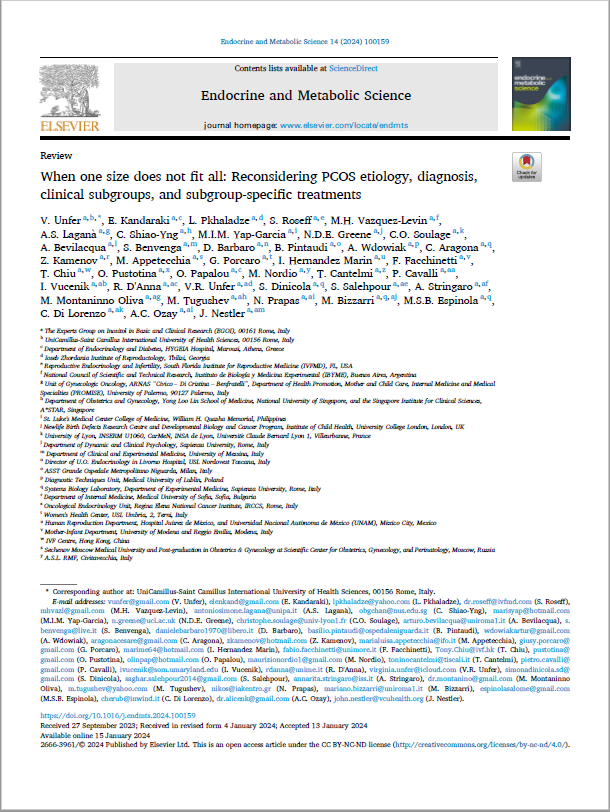Authors:
V. Unfer, E. Kandaraki, L. Pkhaladze, S. Roseff, M.H. Vazquez-Levin, A.S. Laganà, C. Shiao-Yng, M.I.M. Yap-Garcia, N.D.E. Greene, C.O. Soulage, A. Bevilacqua, S. Benvenga, D. Barbaro, B. Pintaudi, A. Wdowiak, C. Aragona, Z. Kamenov, M. Appetecchia, G. Porcaro, I. Hernandez Marin, F. Facchinetti, T. Chiu, O. Pustotina, O. Papalou, M. Nordio, T. Cantelmi, P. Cavalli, I. Vucenik, R. D’Anna, V.R. Unfer, S. Dinicola, S. Salehpour, A. Stringaro, M. Montaninno Oliva, M. Tugushev, N. Prapas, M. Bizzarri, M.S.B. Espinola, C. Di Lorenzo, A.C. Ozay, J. Nestler,
Highlights
• The Rotterdam clinical subtypes represent different manifestations of PCOS, however; they remain mostly ignored in study design and clinical practice. These exhibit differences that should be considered for diagnosis and tailored therapy.
• The diagnostic tools adopted by physicians rely on parameters and techniques which require further revision, as also noted by the ESHRE commission. The diagnosis of PCOS should be updated and renewed according to the most recent literature.
• A correlation between insulin resistance and hyperandrogenism has indicated how these factors may contribute to ovarian alterations. Consequently, PCOS subtypes A, B, and C may be endocrine-metabolic syndromes with a metabolic clinical onset.
• Clinical subtype D lacks hyperandrogenic features and exhibits a lower incidence of metabolic and endocrine issues. Therefore, it could be described as the only subtype with a solely ovarian pathogenesis.

